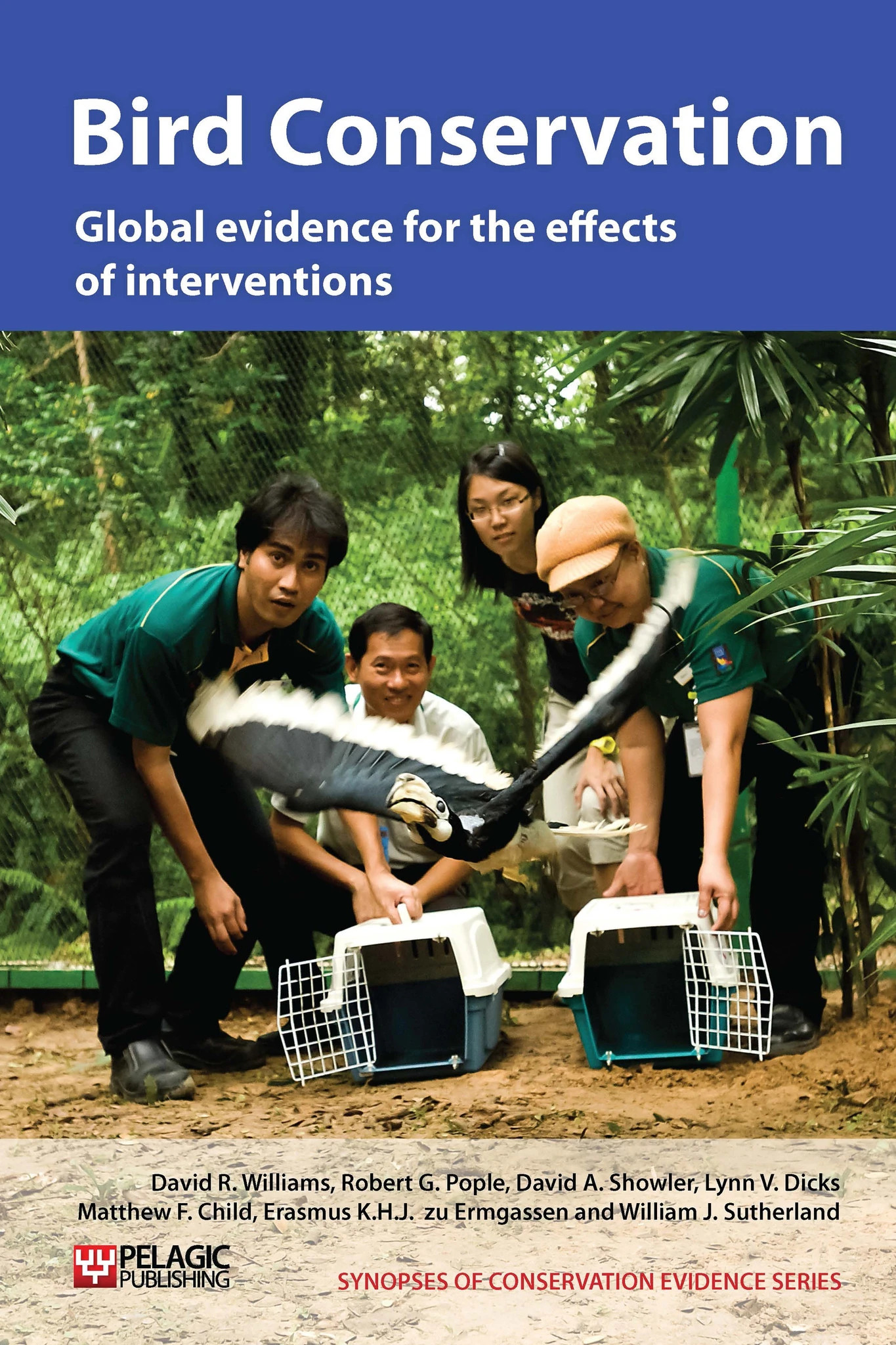Provide supplementary food for hummingbirds to increase adult survival
-
Overall effectiveness category Unknown effectiveness (limited evidence)
-
Number of studies: 7
View assessment score
Hide assessment score
How is the evidence assessed?
-
Effectiveness
10% -
Certainty
24% -
Harms
0%
Study locations
Supporting evidence from individual studies
A controlled study in mountainous pine forests in California, USA, in July 1976 (Wheeler 1980) found that Anna’s hummingbirds Calypte anna fed more on red-dyed sugar solutions than solutions on other colours (17 visits/hour for red solution vs. 13 for yellow, eight for green, four for blue and five for uncoloured). However, birds did not show a preference when solutions were presented one after another. A separate experiment found that, after 40 minutes, approximately 80% of hummingbirds visiting a feeding area went to a feeder containing sugar solution, rather than a control feeder containing water. Solutions consisted of saturated solutions of cane sugar in water and were supplied from a 250 ml feeder with small holes near the base. The feeder had been used for several years before the experiment.
Study and other actions testedA replicated trial in captivity in Mexico (Martinez del Rio 1990) found that three species of hummingbird all showed strong preference for a pure sucrose solution, compared to a ‘hexose solution’ (1:1 ratio of glucose and sucrose); ‘hexose solution’ was preferred to glucose by all species; and glucose preferred to fructose. Solutions were equiweight, with 17.1% concentration, by weight. Feeding consisted of providing a pair of sugar solutions in glass feeding tubes (a 42 cm vertical section leading to a lower 7 cm section at a 45° angle, tapering to a 2.5 mm hole from which birds drank) for four hours and measuring the volume consumed. The species tested were cinnamon hummingbird Amazilia rutila, broad-billed hummingbird Cynanthus latirostris and fork-tailed emerald Chlorostilbon canivetii, with six individuals from each species being used in each pairwise comparison.
Study and other actions testedA replicated study in the summers of 1986-7 in pine scrubland in Arizona, USA (Stromberg & Johnsen 1990), found that black-chinned hummingbirds Archilochus alexanderi preferentially fed on 40% sucrose solutions (by weight/volume) when offered the choice of 40%, 10% and 20% (taking four times as much 40% solution as the others), but showed no preference when given the choice of 20%, 25% and 30% or 20%, 30% and 40%. Hummingbirds also showed a very strong preference for 20% sucrose solution, compared to saccharin (0.045% concentration), aspartame (0.1%) and Equal® (2.47%) artificial sweeteners (taking between six and 12 times more sugar than sweetener). Increasing the viscosity of the artificial solutions did not increase their consumption. All solutions were provided in ten commercial hummingbird feeders, each with three feeding points, scattered 300 m along a ridge. Experiments ran for 15-30 minutes.
Study and other actions testedA replicated study in a coniferous forest in Montana, USA, in summer 1995 (Blem et al. 1997) found that rufous hummingbirds Selasphorous rufus preferentially visited feeders containing higher concentrations of sucrose, until 50% sucrose by weight, above which they did not show a preference. They also appeared to preferentially use more highly elevated feeders (approximately 80% of the maximum sucrose consumed was taken from feeders 3 m from the ground vs. a maximum of 55% from feeders hung 2.75 m or less from the ground). Food was supplied at seven stations, each with 12 feeders hung at between 0.25 and 3.00 m from the ground.
Study and other actions testedA replicated trial in a coniferous forest in Montana, USA, in the summers of 1996 and 1997 (Blem et al. 2000) found that rufous hummingbirds Selasphorous rufus preferentially consumed sucrose at a 50% concentration or above when give a choice of solutions at between 10 and 70%. Solutions were provided from arrays of four 10 ml syringes at 12 feeding stations, 100 m apart. All solutions were measured in weight-volume concentrations (i.e. 40% solution is 40 g sucrose in 100 ml water).
Study and other actions testedA randomised, replicated trial in a mixed forest and alpine meadow site in Colorado, USA, in May-August 2001 (Camfield 2003) found that female broad-tailed hummingbirds Selasphorus platycercus visited feeders more often if they contained higher sucrose concentrations (5.8 visits/hr to feeders with 30% solution vs. 4.2 visits/hr with 20% solution and 0.3 visits/hr with 10%). Sucrose solutions were provided in nine 100 ml commercially-available feeders at least 50 m apart. Feeders were randomly assigned to a sugar concentration at the beginning of the study and monitored for a one hour a day for a total of 17 days. Solutions were measured as weight-volume concentrations.
Study and other actions testedA randomised replicated and controlled study in temperate forests in southern Argentina (Chalcoff et al. 2008) found that green-backed firecrowns Sephanoides sephaniodes preferentially consumed sucrose solutions over glucose and fructose and preferred all sugar solutions over water. The preference for sucrose was only significant when the total amount of sugar consumed was examined (not the rate of visits, consumption/visit or consumption/hummingbird), with 24% and 68% more sucrose being consumed, compared to fructose and glucose respectively. There were no differences between sucrose and a glucose-fructose mix. Male hummingbirds used feeders more than females and more sugar was consumed at lower temperatures. All sugar solutions were the same concentration (24% by weight) and were provided from five commercial hummingbird feeders placed in three sites throughout the forest for ten days at a time in December 1999, February–May 2000, and January–February 2001.
Study and other actions tested
Where has this evidence come from?
List of journals searched by synopsis
All the journals searched for all synopses
This Action forms part of the Action Synopsis:
Bird Conservation
Bird Conservation - Published 2013
Bird Synopsis





)_2023.JPG)














